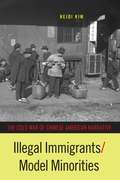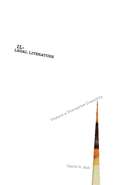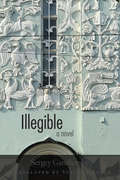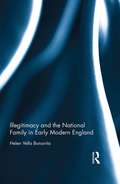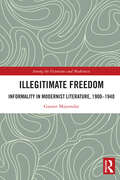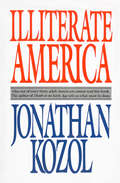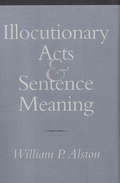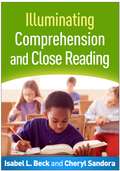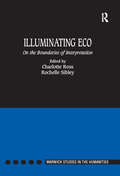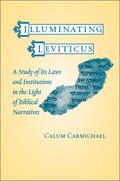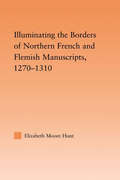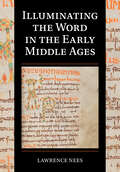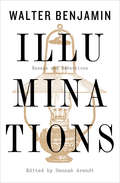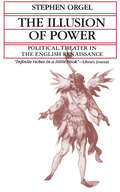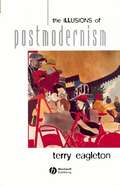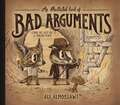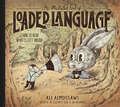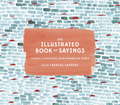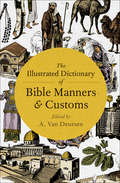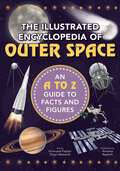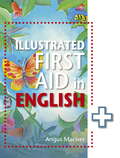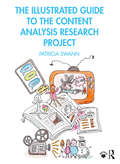- Table View
- List View
Illegal Immigrants/Model Minorities: The Cold War of Chinese American Narrative (Asian American History & Cultu #225)
by Heidi KimIn the Cold War era, Chinese Americans were caught in a double-bind. The widespread stigma of illegal immigration, as it was often called, was most easily countered with the model minority, assimilating and forming nuclear families, but that in turn led to further stereotypes. In Illegal Immigrants/Model Minorities, Heidi Kim investigates how Chinese American writers navigated a strategy to normalize and justify the Chinese presence during a time when fears of Communism ran high. Kim explores how writers like Maxine Hong Kingston, Jade Snow Wong, and C. Y. Lee, among others, addressed issues of history, family, blood purity, and law through then-groundbreaking novels and memoirs. Illegal Immigrants/Model Minorities also uses legal cases, immigration documents, and law as well as mass media coverage to illustrate how writers constructed stories in relation to the political structures that allowed or disallowed their presence, their citizenship, and their blended identity. Kim illuminates the rapidly shifting political and social pressures on Chinese American authors who selectively concealed, revealed, and reconstructed issues of citizenship, belonging, and inclusion in their writing.
Illegal Literature: Toward a Disruptive Creativity
by David S. RohWhat is the cultural value of illegal works that violate the copyrights of popular fiction? Why do they persist despite clear and stringent intellectual property laws? Drawing on the disciplines of new media, law, and literary studies, Illegal Literature suggests that extralegal works such as fan fiction are critical to a system that spurs the evolution of culture.Reconsidering voices relegated to the cultural periphery, David S. Roh shows how infrastructure—in the form of legal policy and network distribution—slows or accelerates the rate of change. He analyzes the relationship between intellectual property rights and American literature in two recent copyright disputes. And, in comparing American fan fiction and Japanese dojinshi, he illustrates how infrastructure and legal climates detract from or encourage fledgling creativity.Illegal Literature fills a crucial gap between the scholarly and the popular by closely examining several modes of marginalized cultural production. Roh makes the case for protecting an environment conducive to literary heresy, the articulation of an accretive rather than solitary authorial genius, and the idea that letting go rather than holding on is important to a generative creative process. In a media ecology inundated by unauthorized materials, Illegal Literature argues that the proliferation of unsanctioned texts may actually benefit literary and cultural development.
Illegible: A Novel (NIU Series in Slavic, East European, and Eurasian Studies)
by Sergey GandlevskySergey Gandlevsky's 2002 novel Illegible has a double time focus, centering on the immediate experiences of Lev Krivorotov, a twenty-year-old poet living in Moscow in the 1970s, as well as his retrospective meditations thirty years later after most of his hopes have foundered. As the story begins, Lev is involved in a tortured affair with an older woman and consumed by envy of his more privileged friend and fellow beginner poet Nikita, one of the children of high Soviet functionaries who were known as "golden youth."In both narratives, Krivorotov recounts with regret and self-castigation the failure of a double infatuation, his erotic love for the young student Anya and his artistic love for the poet Viktor Chigrashov. When this double infatuation becomes a romantic triangle, the consequences are tragic.In Illegible, as in his poems, Gandlevsky gives us unparalleled access to the atmosphere of the city of Moscow and the ethos of the late Soviet and post-Soviet era, while at the same time demonstrating the universality of human emotion.
Illegitimacy and the National Family in Early Modern England
by Helen Vella BonavitaThis study considers the figure of the bastard in the context of analogies of the family and the state in early modern England. The trope of illegitimacy, more than being simply a narrative or character-driven issue, is a vital component in the evolving construction and representation of British national identity in prose and drama of the sixteenth and early seventeenth century. Through close reading of a range of plays and prose texts, the book offers readers new insight into the semiotics of bastardy and concepts of national identity in early modern England, and reflects on contemporary issues of citizenship and identity. The author examines play texts of the period including Bale's King Johan, Peele's The Troublesome Reign of John, and Shakespeare's King John, Richard II, and King Lear in the context of a selection of legal, religious, and polemical texts. In so doing, she illuminates the extent to which the figure of the bastard and, more generally the trope of illegitimacy, existed as a distinct discourse within the wider discursive framework of family and nation.
Illegitimate Freedom: Informality in Modernist Literature, 1900–1940 (Among the Victorians and Modernists)
by Gaurav MajumdarIllegitimate Freedom: Informality in Modernist Literature, 1900 - 1940 is the first study of informality in modernist literature. Differentiating informality from intimacy in its introduction, the book discusses the informal in relation with sensory experience, aesthetic presentation, ethical deliberation or action, and social attitudes within modernist works. It examines these works for particular nuances of the word "informality" in each of its chapters in the following thematic sequence: informality that offers humour, interpretive freedom, and promiscuity as counters to self-absorption in works by Virginia Woolf; rebuttals to male priorities in liberalism through "feminine informality" in several short stories by Katherine Mansfield; contempt for colloquialism and intimacy, tinged with class-anxieties and crises of attitude, in T. S. Eliot’s poetry; resistance to disgust in James Joyce’s novels; and the fusion of irreverence, protest, and praise in W. H. Auden’s writings before 1940. The book’s conclusion considers the risks of informality through a discussion of what it calls "inverted dignity." The theoretical aspects of the book offer insights into Lockean liberalism, the ethical dimensions of what Hélène Cixous termed "feminine writing," relations of sublimity and domesticity, Sigmund Freud’s arguments on humour and melancholia, and recent affect theory’s—as well as Immanuel Kant’s and Friedrich Nietzsche’s—views on disgust, linking these with modernism. This wide range of engagement makes this study relevant for those interested in literary studies, critical theory, and philosophy.
The Illiberal Imagination: Class and the Rise of the U.S. Novel
by Joe ShapiroThe Illiberal Imagination offers a synthetic, historical formalist account of how—and to what end—U.S. novels from the late eighteenth century to the mid-1850s represented economic inequality and radical forms of economic egalitarianism in the new nation. In conversation with intellectual, social, and labor history, this study tracks the representation of class inequality and conflict across five subgenres of the early U.S. novel: the Bildungsroman, the episodic travel narrative, the sentimental novel, the frontier romance, and the anti-slavery novel.Through close readings of the works of foundational U.S. novelists, including Charles Brockden Brown, Hugh Henry Brackenridge, Catharine Maria Sedgwick, James Fenimore Cooper, and Harriet Beecher Stowe, Joe Shapiro demonstrates that while voices of economic egalitarianism and working-class protest find their ways into a variety of early U.S. novels, these novels are anything but radically dialogic; instead, he argues, they push back against emergent forms of class consciousness by working to naturalize class inequality among whites. The Illiberal Imagination thus enhances our understanding of both the early U.S. novel and the history of the way that class has been imagined in the United States.
Illiterate America
by Jonathan Kozol"Kozol. . . has assembled facts, rebuttals, and proposals-in an emotionally potent, ethically charged package. "-Kirkus.
Illocutionary Acts and Sentence Meaning
by William P. AlstonWhat is it for a sentence to have a certain meaning? This is the question that the distinguished analytic philosopher William P. Alston addresses in this major contribution to the philosophy of language. His answer focuses on the given sentence's potential to play the role that its speaker had in mind, what he terms the usability of the sentence to perform the illocutionary act intended by its speaker. Alston defines an illocutionary act as an act of saying something with a certain "content." He develops his account of what it is to perform such acts in terms of taking responsibility, in uttering a sentence, for the existence of certain conditions. In requesting someone to open a window, for example, the speaker takes responsibility for its being the case that the window is closed and that the speaker has an interest in its being opened. In Illocutionary Acts and Sentence Meaning, Alston expands upon this concept, creating a framework of five categories of illocutionary act and going on to argue that sentence meaning is fundamentally a matter of illocutionary act potential; that is, for a sentence to have a particular meaning is for it to be usable to perform illocutionary acts of a certain type. In providing detailed and explicit patterns of analysis for the whole range of illocutionary acts, Alston makes a unique contribution to the field of philosophy of language--one that is likely to generate debate for years to come.
Illuminating Comprehension and Close Reading
by Isabel L. Beck Cheryl SandoraGrasping the meaning of a text enables K-8 students to appreciate its language and structure through close reading, which in turn leads to deeper comprehension. This book explains the relationship between comprehension and close reading and offers step-by-step guidelines for teaching both of these key elements of literacy. Reproducible lessons are shared for eight engaging texts (excerpts from fiction, nonfiction, and poetry), complete with discussion tips, queries that scaffold comprehension, close reading activities, and connections to the Common Core State Standards (CCSS). The authors model lesson development and guide teachers in constructing their own lessons. Texts for 10 additional lessons are provided in the Appendix. Purchasers get access to a Web page where they can download and print all 18 texts in a convenient 8 1/2" x 11" size.
Illuminating Eco: On the Boundaries of Interpretation (Warwick Studies in the Humanities)
by Charlotte RossIlluminating Eco covers the range of British scholarship on the prolific literary and theoretical work of Umberto Eco. With essays by scholars such as Michael Caesar and David Robey, the volume provides an overview of current research being carried out by a new generation of academics. In addition, it provides an opportunity to view the interaction between Eco's fiction and his theoretical texts and suggests future avenues of research. The interdisciplinary nature of the contributions makes this collection accessible to Italianists and non-Italian speakers alike in order to situate Eco's work in the wider literary and critical sphere. Contributions have been divided into four sections, with the first containing essays that engage with Eco's writing through a strong awareness of the reading strategies suggested and required by his texts. The second section is composed of essays that discuss different approaches to interpretative strategies, including the relationship between Eco's theoretical writing and his own fiction. The third part consists of new responses to Eco's work, each of which questions previous theoretical interpretations and creates new applications for established approaches. Finally, the fourth section contains a written response from Eco himself to some of the questions raised by these essays, and a translation of the final chapter from his most recent publication, Sulla letteratura, which discusses the development of his narrative works from conception to execution.
Illuminating Leviticus: A Study of Its Laws and Institutions in the Light of Biblical Narratives
by Calum CarmichaelThe origin of law in the Hebrew Bible has long been the subject of scholarly debate. Until recently, the historico-critical methodologies of the academy have yielded unsatisfactory conclusions concerning the source of these laws which are woven through biblical narratives. In this original and provocative study, Calum Carmichael—a leading scholar of biblical law and rhetoric—suggests that Hebrew law was inspired by the study of the narratives in Genesis through 2 Kings.Discussing particular laws found in the book of Leviticus—addressing issues such as the Day of Atonement, consumption of meat that still has blood, the Jubilee year, sexual and bodily contamination, and the treatment of slaves—Carmichael links each to a narrative. He contends that biblical laws did not emerge from social imperatives in ancient Israel, but instead from the careful, retrospective study of the nation’s history and identity.
Illuminating the Border of French and Flemish Manuscripts, 1270–1310 (Studies in Medieval History and Culture)
by Lisa Moore HuntThis study first examines the marginal repertoire in two well-known manuscripts, the Psalter of Guy de Dampierre and an Arthurian Romance, within their material and codicological contexts. This repertoire then provides a template for an extended study of the marginal motifs that appear in eighteen related manuscripts, which range from a Bible to illustrated versions of the encyclopedias of Vincent de Beauvais and Brunetto Latini. Considering the manuscript as a whole work of art, the marginalia’s physical relationship to nearby texts and images can shed light on the reception of these illuminated books by their medieval viewers.
Illuminating the Word in the Early Middle Ages (Cambridge Studies in Palaeography and Codicology #18)
by Lawrence NeesThis richly illustrated study addresses the essential first steps in the development of the new phenomenon of the illuminated book, which innovatively introduced colourful large letters and ornamental frames as guides for the reader's access to the text. Tracing their surprising origins within late Roman reading practices, Lawrence Nees shows how these decorative features stand as ancestors to features of printed and electronic books we take for granted today, including font choice, word spacing, punctuation and sentence capitalisation. Two hundred photographs, nearly all in colour, illustrate and document the decisive change in design from ancient to medieval books. Featuring an extended discussion of the importance of race and ethnicity in twentieth-century historiography, this book argues that the first steps in the development of this new style of book were taken on the European continent within classical practices of reading and writing, and not as, usually presented, among the non-Roman 'barbarians'.
Illuminations: Essays and Reflections
by Walter BenjaminEssays and reflections from one of the twentieth century&’s most original cultural critics, with an introduction by Hannah Arendt. Walter Benjamin was an icon of criticism, renowned for his insight on art, literature, and philosophy. This volume includes his views on Kafka, with whom he felt a close personal affinity; his studies on Baudelaire and Proust; and his essays on Leskov and Brecht&’s epic theater. Illuminations also includes his penetrating study &“The Work of Art in the Age of Mechanical Reproduction,&” an enlightening discussion of translation as a literary mode; and his theses on the philosophy of history. Hannah Arendt selected the essays for this volume and introduces them with a classic essay about Benjamin&’s life in a dark historical era. Leon Wieseltier&’s preface explores Benjamin&’s continued relevance for our times. Walter Benjamin (1892–1940) was a German-Jewish Marxist literary critic, essayist, translator, and philosopher. He was at times associated with the Frankfurt School of critical theory and was also greatly inspired by the Marxism of Bertolt Brecht and Jewish mysticism as presented by Gershom Scholem.
The Illusion of Power: Political Theater in the English Renaissance
by Stephen Orgel"Elegant, deeply learned, and intellectually adventurous, its implications extend far beyond the boundaries of the Stuart and Caroline masque. It is an indispensable, exploration of political art and aestheticized politics. . . . a classic."--Stephen Greenblatt, University of California, Berkeley "A triumph of scholarship, insight, and explication, Oregel's book is truly a classic in the field of Renaissance studies. Anyone interested in Renaissance culture will find here a masterful analysis of its celebration of royal power."--Coppelia Kahn, Brown University "As knowing of art, theatrical and political history as it is sensitive to poetry, Orgel's book is learned, lively, and beautifully clear."--John Hollander, Yale University "A foundational text for the New Historicist Perspective in English Renaissance literary and cultural studies . . . as informative and suggestive as it was when new; in the clarity and grace of its writing, the breadth and precision of its arguments, the aptness and resonance of its examples, it is unsurpassed as an introduction to the dialectic of theatrical illusion and state authority--of play and power--in the culture of Elizabethan and Stuart England."--Louis Montrose, University of California, San Diego
The Illusions of Postmodernism
by Terry EagletonIn this brilliant critique, Terry Eagleton explores the origins and emergence of postmodernism, revealing its ambivalences and contradictions. Above all he speaks to a particular kind of student, or consumer, of popular "brands" of postmodern thought.
An Illustrated Book of Bad Arguments: Learn The Lost Art Of Making Sense (Bad Arguments #0)
by Ali Almossawi“This short book makes you smarter than 99% of the population. . . . The concepts within it will increase your company’s ‘organizational intelligence.’. . . It’s more than just a must-read, it’s a ‘have-to-read-or-you’re-fired’ book.”—Geoffrey James, INC.com From the author of An Illustrated Book of Loaded Language, here’s the antidote to fuzzy thinking, with furry animals! Have you read (or stumbled into) one too many irrational online debates? Ali Almossawi certainly had, so he wrote An Illustrated Book of Bad Arguments! This handy guide is here to bring the internet age a much-needed dose of old-school logic (really old-school, a la Aristotle). Here are cogent explanations of the straw man fallacy, the slippery slope argument, the ad hominem attack, and other common attempts at reasoning that actually fall short—plus a beautifully drawn menagerie of animals who (adorably) commit every logical faux pas. Rabbit thinks a strange light in the sky must be a UFO because no one can prove otherwise (the appeal to ignorance). And Lion doesn’t believe that gas emissions harm the planet because, if that were true, he wouldn’t like the result (the argument from consequences). Once you learn to recognize these abuses of reason, they start to crop up everywhere from congressional debate to YouTube comments—which makes this geek-chic book a must for anyone in the habit of holding opinions.
An Illustrated Book of Loaded Language: Learn To Hear What's Left Unsaid (Bad Arguments #0)
by Ali Almossawi Alejandro Giraldo“This is a book for every thinking person, the perfect antidote to today’s culture wars.”—Hope Jahren The creators of An Illustrated Book of Bad Arguments return with this desperately timely guide to how words can trick us. Learn to “hear” hidden bias, slant, and spin—from an irresistible cast of woodland creatures! Public discourse? More like public discord. The battle cries of our culture wars are rife with “loaded language”—be it bias, slant, or spin. But listen closely, or you’ll miss what Ali Almossawi finds more frightening still: words that erase accountability, history, even identity through what they leave unsaid. Speaking as wise old Mr. Rabbit, Almossawi leads us through a dark forest of rhetoric—aided by Orwell, Baldwin, and a squee-worthy cast of wide-eyed woodland creatures. Here, passive voice can pardon wrongdoers, statistics may be a smokescreen, gaslighting entraps the downtrodden, and irrelevant adjectives cement stereotypes. Emperor Squirrel isn’t naked; he has a clothes-free sartorial style. Mouse’s roof becomes flattened (Elephant’s foot just happens to be there at the time). And when keen-eyed Owl claims a foreign shore, he seems to be overlooking someone . . . Fans of Almossawi’s An Illustrated Book of Bad Arguments couldn’t ask for a better primer on the less logical ways that words can trick us. It takes a long pair of ears to hear what’s left unsaid—but when you’re a rabbit in a badger world, listening makes all the difference.
The Illustrated Book of Sayings: Curious Expressions from Around the World
by Ella Frances SandersFrom the New York Times bestselling author of Lost in Translation comes this charming illustrated collection of more than fifty expressions from around the globe that explore the nuances of language. From the hilarious and romantic to the philosophical and literal, the idioms, proverbs, and adages in The Illustrated Book of Sayings reveal the remarkable diversity, humor, and poignancy of the world's languages and cultures.From the Hardcover edition.
The Illustrated Dictionary of Bible Manners & Customs
by A. Van DeursenThis comprehensive volume provides detailed descriptions, illustrations, and context for many of the Bible&’s historical and cultural references. Bible stories are full of objects, manners, and customs that would have been easily recognized by people living in the Middle East during ancient times. Towns have their walls and gates; agriculture has its threshing instruments and carts; the tabernacle has its altars and lavers of brass. But while the terms used to describe these items were once common knowledge, they leave many modern readers wondering about their specific meanings. This volume offers a clearer understanding of the Bible through accessible information about its many historical references. Organized by subject matter, it includes chapters on everything from vegetation to coinage, matrimony, weaponry, transportation, idolatry, and holy places, among many other topics. Based on archeological research, The Illustrated Dictionary of Bible Manners & Customs helps readers attain a more vivid sense of the Bible&’s rich background and longstanding influence.
The Illustrated Encyclopedia of Outer Space: An A to Z Guide to Facts and Figures
by Diego Mattarelli Emanuela PagliariAstronauts, rockets, and stars—oh my! Learn everything about outer space from A to Z! This isn&’t your normal alphabet book. Instead of reading about apples and zebras, your child can learn planets and galaxies! Each letter in this fun alphabet book pertains to an important topic that explores space and space travel. Packed with information and curiosities, children will learn about: Black holesMeteorsSpace StationsOrbitsRocket scientistsAnd more! Kids get enough of simple words in school and not all kids are interested in the alphabet and reading. Pique their interest with this colorful, illustrated book that they will be wanting to read again and again. Encourage your kids to learn their alphabet by associating fun facts about space to each letter. After reading this picture book, young readers will be able to say with confidence that they know space from A to Z!
The Illustrated First Aid in English
by Angus MaciverUsed wherever the English Language is spoken or taught and now re-designed and beautifully illustrated to make it bright, appealing, attractive and motivating.This illustrated edition retains the structure and approach of the original bestseller but has been produced to ensure that all the terms and information are up to date and reflect the international readership of the book. It is invaluable in class and as a reference book, both to native English speakers and to students of English as an additional language. - Covers vocabulary, spelling, syntax, idiom and correct usage- Provides background information- Includes a wide-range of exercises to test knowledge and skillsThe New Illustrated First Aid in English is accompanied by an answer book which gives answers to all the exercises and tests.
The Illustrated First Aid in English
by Angus MaciverUsed wherever the English Language is spoken or taught and now re-designed and beautifully illustrated to make it bright, appealing, attractive and motivating.This illustrated edition retains the structure and approach of the original bestseller but has been produced to ensure that all the terms and information are up to date and reflect the international readership of the book. It is invaluable in class and as a reference book, both to native English speakers and to students of English as an additional language. - Covers vocabulary, spelling, syntax, idiom and correct usage- Provides background information- Includes a wide-range of exercises to test knowledge and skillsThe New Illustrated First Aid in English is accompanied by an answer book which gives answers to all the exercises and tests.
The Illustrated Guide to the Content Analysis Research Project
by Patricia SwannThe Illustrated Guide to the Content Analysis Research Project makes mass media research more accessible through an informal and humorous student-centered approach. Author Patricia Swann provides a colorful, step-by-step guide to developing a typical mass media research project using the content analysis method. The fundamental elements of this research method are presented in plainspoken language perfect for undergraduates and new researchers, complete with engaging illustrations and an informal narrative that tackle students’ most common sticking-points when learning and applying research methods. Supplemented by online worksheets for further reflection, this book is an excellent companion to research-centered courses in mass media, communication studies, marketing, and public relations at the introductory level.
An Illustrated Guide to The Lost Symbol
by John WeberRich in world history and political power, veiled in secrecy, and rife with rituals and arcane symbols -- from art and architecture to the images that adorn our currency -- the Freemasons arose from ambiguous origins centuries ago to play a major role in drafting the initial documents of the United States, and even in constructing the intricate landscape of Washington, D.C., itself a virtual mystery by design. These puzzles lay the foundation for Dan Brown's serpentine thriller, The Lost Symbol, and also raise provocative questions. Why do some Masonic symbols remain obscured, while others are hidden in plain sight? Which presidents were the embodiments of Masonic ideals? What is the significance of the construction of the Library of Congress, Washington National Cathedral, the Washington Monument, the Capitol, and the physical layout of Washington, D.C.'s roadways and cul-de-sacs? And to what secretive end do they all lead? Now millions of curious fans can follow Robert Langdon step-by-step, and discover for themselves the answers to the absorbing conundrums posed by The Lost Symbol in this comprehensive, fully illustrated, and intricately detailed tour of the arcana of Washington, D.C. It takes readers through the enigmatic codes, captivating trivia, unfathomable riddles, intriguing records, historic maps, ciphers, and conspiracies of the phenomenal bestseller. What's more, it reveals the fascinating details of a world of unknown locales, mysticism, intrigue, and secret societies -- all of which lie in the shadow of The Lost Symbol.
